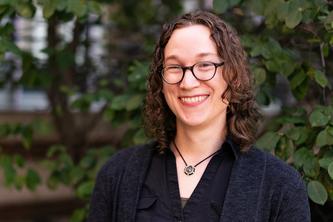
University of Minnesota researchers have developed a new online tool aimed at showing families’ access to child care and early childhood education services across Minnesota.
The site, ChildCareAccess.org, takes a family-centered perspective by mapping each neighborhood in the state, using data about how many families with young children live there and showing measures of local families’ access accounting for nearby providers, costs and quality. It also provides community reports for every school district, county, state House district and state Senate district in Minnesota.
Researchers from the Carlson School of Management (CSOM) and College of Food, Agricultural and Natural Resource Sciences measured access to care by examining the quantity, total cost (i.e., price, travel times), and quality-ratings of nearby care.
“Many Minnesota families struggle to access and afford early child care and education for their children,” said Aaron Sojourner, a CSOM associate professor and labor economist. “Our goal is to provide community leaders with accurate measures of families’ access in and across communities in order to inform decisions about where and how to invest in improving care. We developed this tool to help communities assess families’ access in multiple dimensions. They can get underneath the pain, self-diagnosis the problems and develop tailored prescriptions to improve access.”
Based on their research using U.S. Census Bureau data and early care and education provider locations, the team of economists found the average family with young children in Minnesota lives in a location where there are almost two young children for every nearby slot of licensed capacity at a center- or home-based provider (0.55 nearby slots per child). Researchers determined this by approximating where such families live and computing drive times to all nearby providers.
“By looking at drive times and not only within census tract, city or county boundaries, we improve on previous measures. Families shop for care across boundaries and these new measures reflect that,” Applied Economics Professor Elizabeth Davis said.
“Access varies across communities in the state. On the high end, two counties—Cook and Red Lake—averaged a slot or more per nearby child. This includes all the nearby slots from centers, licensed family child care, and public providers. On the other end, Lake County ranked lowest with families averaging only 0.28 nearby slots per child.”
Access also varies within communities.
“Although Red Lake County ranks best among the state’s counties in terms of average number of nearby slots per child, about a third of Red Lake County families with young children live in neighborhoods with access levels below the Minnesota average,” Applied Economics Ph.D. student Won Fy Lee said. “These tools can help community leaders see which parts of their community are suffering from low access to child care.”
By combining the number of slots with the average cost for full-time care per week and information about the quality of care using data from the Minnesota Department of Human Services’ Parent Aware resource, researchers provided an overall look at access across Minnesota’s 87 counties.
Researchers found that Red Lake County had the greatest overall access to care—ranking first for quantity and quality of care and fifth for cost of care. Ramsey County had the lowest overall access to care—ranking 82nd for the number of available slots per child, 85th for cost of care and 30th for quality of care.

“With this data, we can have conversations about ways to support and fund a robust child care ecosystem that ultimately supports young children in being school and life ready; supports parents and their communities to economic prosperity; and, finally, ensures that Minnesota has the workforce it needs to be successful today and tomorrow,” said Cisa Keller, senior vice president of Early Childhood Quality Development at Think Small.
Further studies could take into account travel times by other transportation means (e.g., public transportation) and how public, voucher-based subsidies affect the cost of child care for families.
###
About the Carlson School of Management
Located on the University of Minnesota Twin Cities campus, the Carlson School of Management exemplifies a commitment to excellence through a focus on experiential learning and international education, and by maintaining strong ties with the Minneapolis/Saint Paul business community. Through its undergraduate and graduate programs, the Carlson School offers access to world-renowned faculty members and an alumni network of 55,000 people. To learn more about the Carlson School of Management go to carlsonschool.umn.edu.
About the College of Food, Agricultural and Natural Resource Sciences
The University of Minnesota College of Food, Agricultural and Natural Resource Sciences (CFANS) offers students and the community unparalleled experiential learning opportunities through its 10 research and outreach centers across Minnesota, the Minnesota Landscape Arboretum and the Bell Museum of Natural History. Among its varied degree programs for undergraduate and graduate students are agricultural education, marketing communications, health and nutrition, and natural resources science and management. Learn more at cfans.umn.edu.
- Categories:
- Science and Technology





